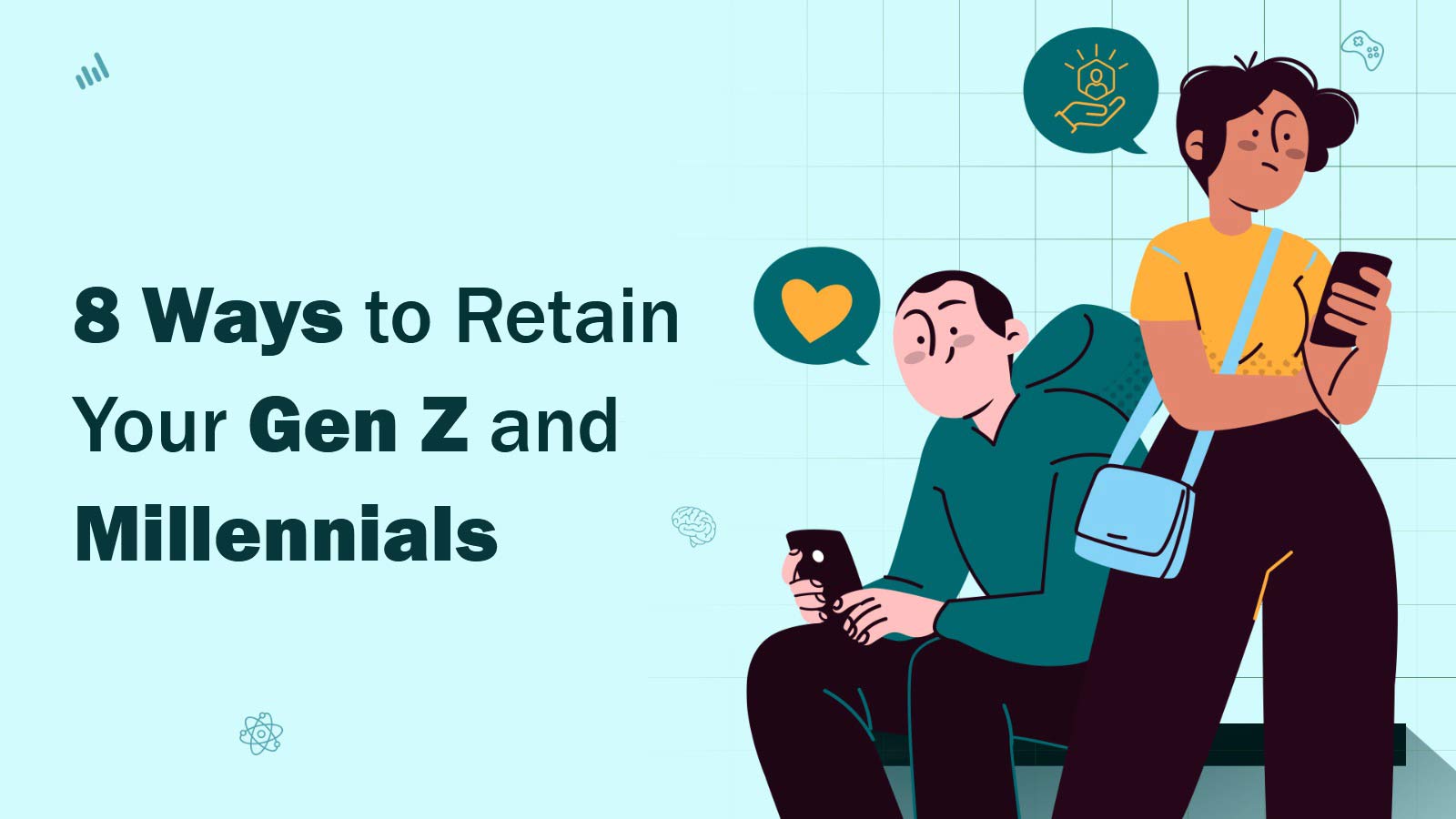This blog shares 8 practical strategies to help you retain your Gen Z and Millennial employees. From gamified hiring to real-time feedback, discover what really keeps young talent engaged and committed.
Retention starts long before someone hands in their notice. It begins with how people are welcomed, engaged, and developed from day one, because keeping young talent starts well before the resignation letter.
Attracting bright young talent isn’t the hard part anymore. The real challenge is getting them to stay.
Many organisations are investing in well-branded Management Trainee and Internship programmes, only to find themselves dealing with high churn and low engagement just a few months in.
This trend is especially visible among Gen Z and younger Millennials, who are entering the workforce with fresh degrees and a distinctly different view of work.
They’re digital natives. They’ve seen layoffs happen to their parents. They’re not afraid to move on if the environment doesn’t feel right.
And as talent scarcity continues to rise, especially in early-career roles, losing them is going to be expensive and not just disappointing.
So, how do you retain your Gen Z and Millennial employees? Here are 8 ideas that are working for forward-looking employers.
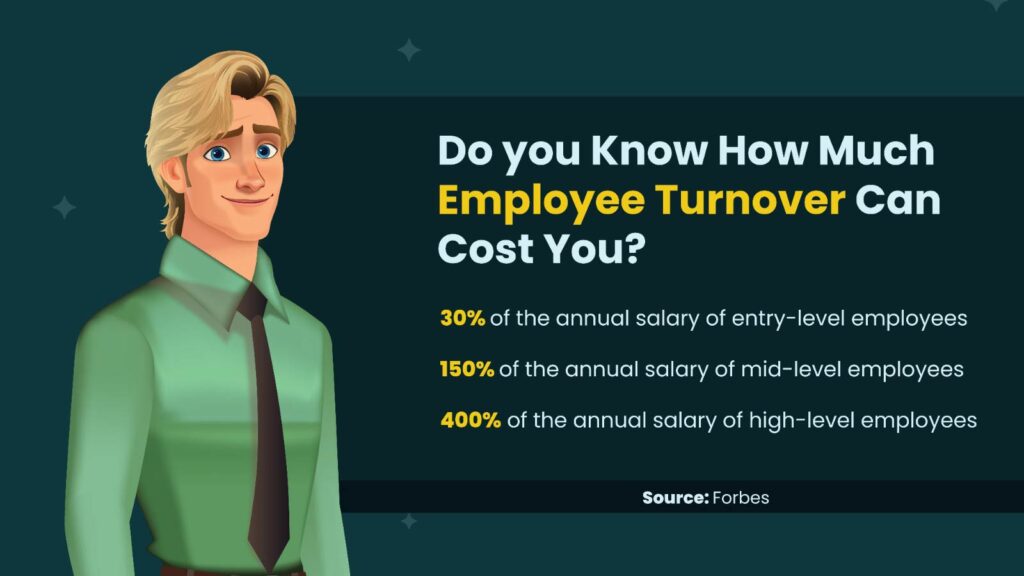
8 Ways to Retain Your Gen Z and Millennials in 2025
Knowing what matters to young talent is one thing. Building everyday practices around it is another. These eight approaches are ways to shape real moments across the employee journey, from day one to year three and beyond
1. Create room for growth
What’s the point of staying if you’re not growing? For Gen Z and younger Millennials, a job is more than just employment. It’s a space to learn, test new ideas and build something meaningful.
This generation has grown up with endless resources at their fingertips. They’re used to moving fast, picking up skills on the go and seeing quick feedback from their efforts.
One of the most effective ways to support that is through personalised development plans. Start by assessing individual strengths, learning styles and goals, then offer access to curated learning paths and challenges that match where they are and where they want to go.
Make progress visible. Recognise growth publicly. It shows them that learning isn’t just encouraged but also it’s rewarded.
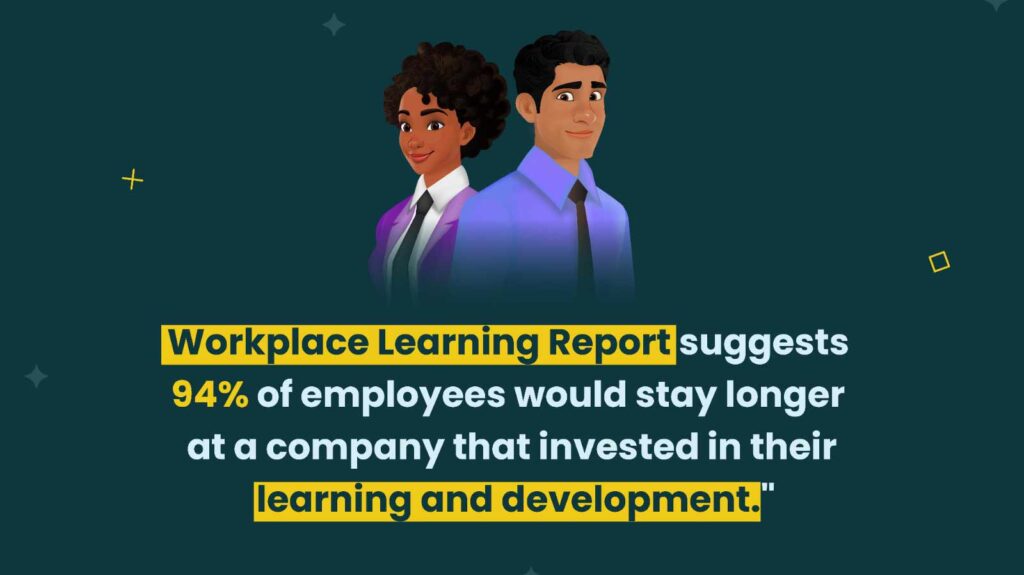
2. Give feedback that feels like a conversation
Gen Z grew up online, accustomed to likes, comments, and real-time interaction. In fact, 72% of Gen Z say they want frequent feedback at work, not just annual reviews.
A formal performance review once a year doesn’t hold much meaning for them.
They want to know how they’re doing and feel they can respond. Regular, honest, two-way feedback helps them feel seen and supported.
To make this work, build a culture of continuous, two-way feedback by swapping long review cycles for regular check-ins.
Use short pulse surveys or feedback tools to encourage honest conversations. Even informal chats with managers go a long way, as long as they happen consistently.
What matters most is that feedback feels timely, relevant, and human.
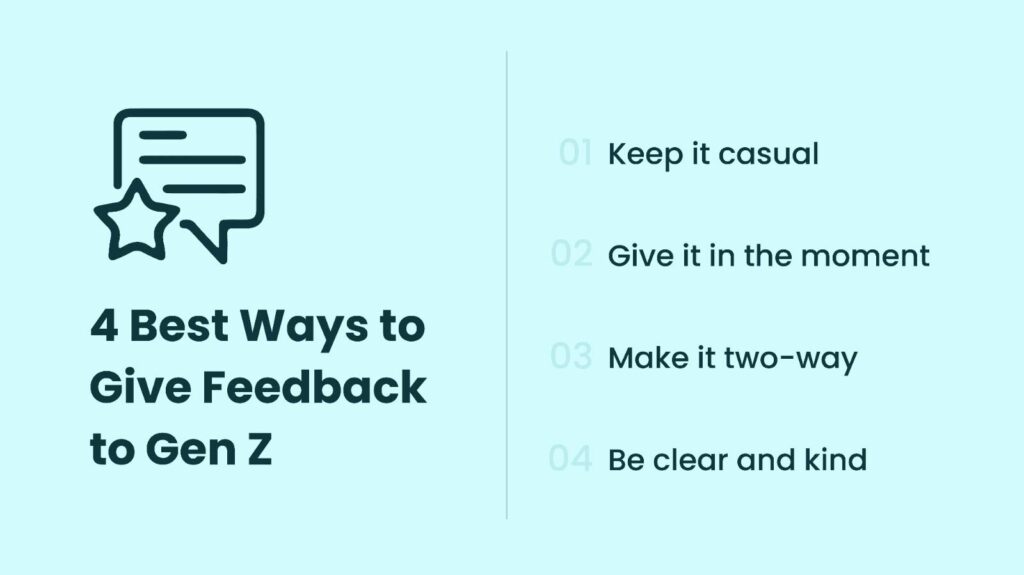
3. Don’t treat flexibility like a bonus
The pandemic didn’t just change where people work, it changed what they expect from work itself. For Gen Z and Millennials, flexibility has become the baseline rather than just a perk.
Leading companies have already caught on. Spotify’s “Work From Anywhere” policy gives employees the freedom to choose their location, which has boosted both satisfaction and retention.
Atlassian allows distributed teams across time zones, focusing on outcomes rather than hours. These models don’t just attract top talent, they keep people motivated and loyal.
If full flexibility isn’t feasible, even small shifts can make a difference. Let teams adjust their hours within a core time range. Offer remote days during the week. The key is to build trust and give people room to work in ways that suit their lives.
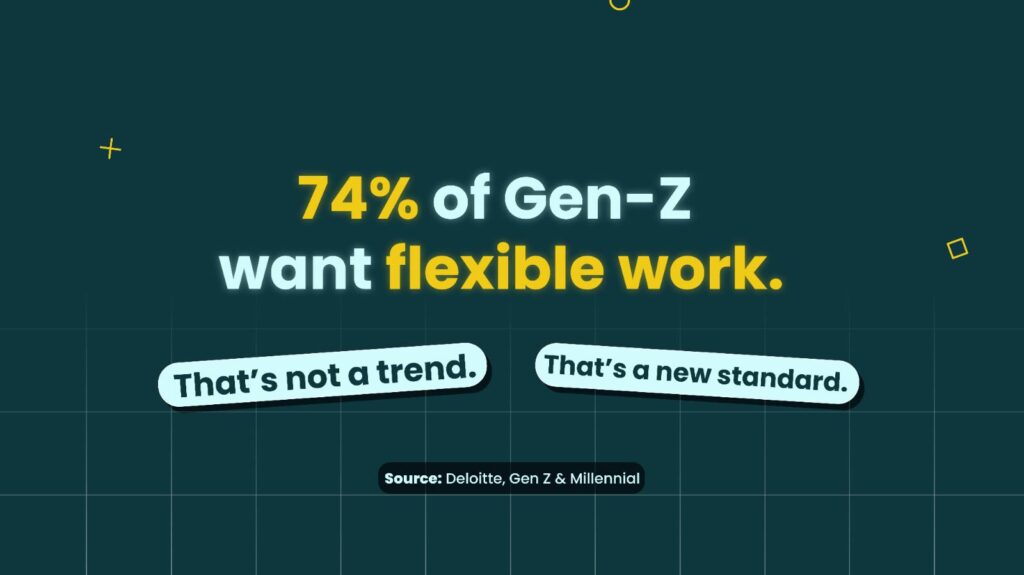
4. Align your actions with your values
Younger talent forms opinions quickly, and they do it with context. It’s not just about what you say. It’s about what they see in the way you hire, promote and lead.
They’ll take note if your diversity goals show up in your leadership team. They’ll spot the disconnect if your company champions sustainability but partners with polluters. Culture isn’t built on claims, it’s shaped by everyday decisions.
Some companies have started to close this gap with real transparency. Instead of big promises, they publish clear goals and track progress openly. Others involve their employees in shaping policies, rather than just rolling them out.
It all comes down to trust. When your values are visible in the small things, they start to mean something.
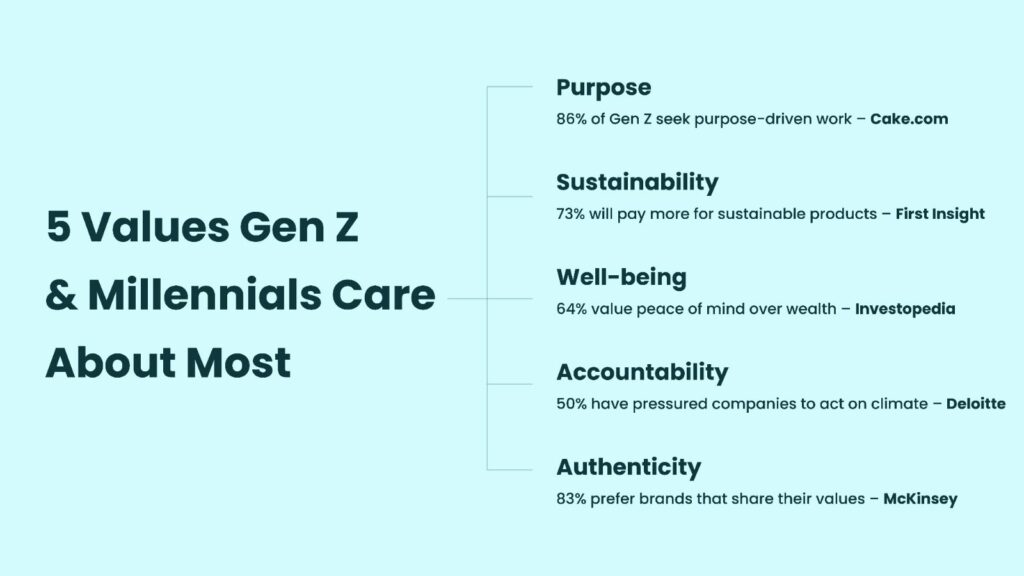
5. Redifine what “company culture” really means
People often decide whether to stay at a job based on how they feel after a tough day. It’s the tone in meetings, the way managers respond to mistakes, and whether ideas are welcomed without judgment.
For younger employees, culture is about emotional safety. If speaking up comes with risk, they’ll stop trying. If asking questions gets them labelled as unprepared, they’ll retreat. And eventually, they’ll move on.
The best teams make room for uncertainty. They reward curiosity. And they create space where people don’t have to perform confidence just to keep up.
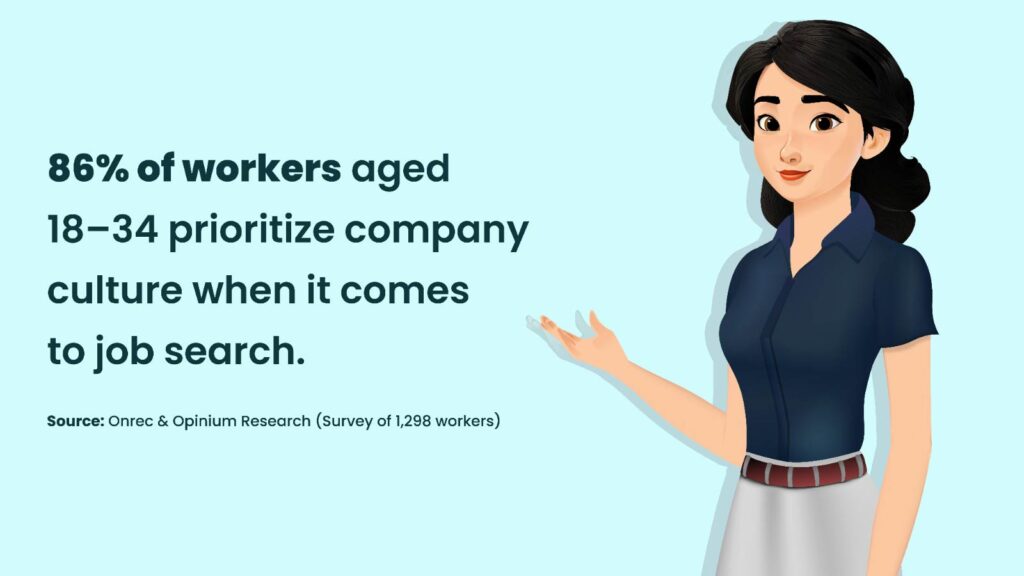
6. Go digital, but do it well
The 21st century’s young professionals expect more than just digital tools. They want experiences that are as seamless, engaging, and intuitive as the apps they use every day.
Clunky onboarding platforms, outdated portals, and tedious paperwork send a clear message that your company is not keeping up.
To attract and retain top talent, your hiring process must be candidate centric, personalized, interactive, and built around their expectations.
Incorporate gamified assessments and streamlined workflows that make the journey feel fresh and relevant.
When the experience resonates, candidates stay engaged and excited to be part of your organization.

7. Gamification Keeps Gen Z and Millennials Hooked Like Nothing Else
Gamification helps level the playing field. Instead of relying on polished résumés or personal bias, it draws insights from how candidates actually think, decide, and behave in real scenarios.
At The Talent Games, gamified Situational Judgment Tests are built around real-world challenges tied to specific job roles. They measure key behavioural competencies, while cognitive and aptitude-based games keep engagement high, and results measurable.
Nestlé’s Nesternship program, powered by these reliable assessments, didn’t just attract thousands across Asia, Oceania, and Africa. It also helped them make better hiring decisions, faster, and with a significant drop in early-stage turnover.
Philip Morris took it further by using gamified simulations for talent development, boosting retention by making learning a challenge employees actually want to take on.

8. Don’t underestimate the power of recognition
A little appreciation can go a long way, especially for early-career professionals who are still figuring out their place. Young employees often question their impact, so when their efforts are noticed, even in small, timely ways, it builds confidence and belonging.
Take The Talent Games, for example. They introduced digital badges for top performers in their gamified assessments. Candidates proudly shared them on social media, turning recognition into motivation, and into organic employer branding. Simple gestures, real impact.
Retention starts early and runs deep
To retain your Gen Z and Millennials, you need more than perks. It’s about building an environment that feels purposeful from hire to growth.
Gamified hiring and development strengthens your employer brand and helps young talent see where they belong.
When you create experiences that are fair, data-driven, and fun, they’re more likely to join, stay, and thrive. Make every stage count, and the right talent won’t just apply to the job post but rather they’ll commit.
